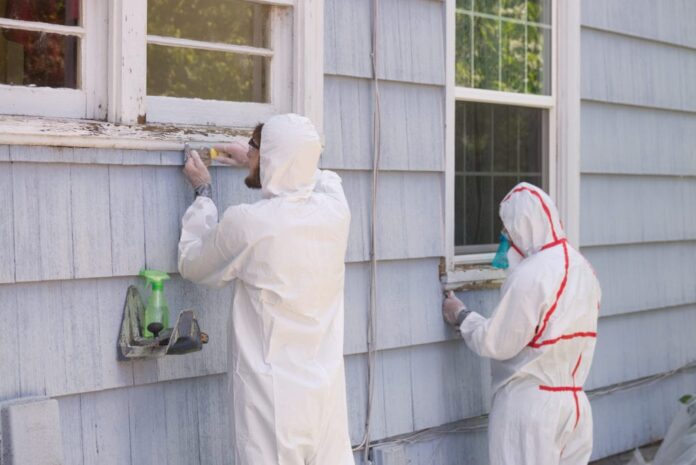If your property is aged, especially one built around the 1970s, the probability of using lead paint by then was high. And lead took the top priority as the best paint due to its fresh appearance, resistance to moisture, and even quick-drying properties. But then, with time, it became a health nuisance, with more health risks as the paint stayed in houses. For example, the color can cause anemia, kidney and brain damage, general body weakness, and worse. It’s also a cause of exposure to health problems for unborn babies due to its adverse effects on pregnant women. As a result, lead isn’t used as paint today.
But even if you know the side effects of the paint, the real challenge is how to remove it safely. Because of this, you will want to implement all the most effective testing and eradication techniques out there. For instance, if you check out Lead Paint Removal Brisbane here, you will discover that the best way to test and remove lead is by using testing kits and following an ultimate guide that makes the job easy the first time. So, let’s find out how the kits and the removal process work.
Testing Lead Paint Using Kits
Among the ways to test for lead paint is by using kits. These kits use chemicals that change color when they contact the lead. There are also many kits on the market, but the most effective ones are sodium rhodizonate or sodium sulfide. These two work by simply applying them to the paint’s surface, and if there is lead-based paint, you will notice their color changing.
How the Sodium Rhodizonate Lead Kit Works
Unlike the other kits, the sodium rhodizonate test kit works by combining water and evaporation effects on a surface, especially by applying heat. The process also uses dilute hydrochloric acid. When in use, the acid is applied to the dried water spot and given some time to dry. Afterward, you add the sodium rhodizonate to the moistened surface and give it some time to dry. If lead is present, you will see a change in color from blue to purple and vice versa.
Or, instead of applying water to the paint surface and then mixing it with hydrochloric acid and sodium rhodizonate, you can also use the acid alone on filter paper. You apply the acid to the filter paper and then the sodium rhodizonate. With time, you will see a color reaction that turns blue to indicate the presence of lead.
How the Sodium Sulfide Test Kit Works
Contrary to sodium rhodizonate, the sodium sulfide test kit is more straightforward in finding out the presence of lead. When using this kit, you place the sulfide on any spot you suspect the presence of lead and wait for an observation. If there is lead, the test kit will automatically change to black or gray, and also, based on the amount of lead-based paint on the surface; you will also see a gray or black residue.
Using the X-Ray Fluorescence Test Kit
Unlike sodium sulfide and rhodizonate, the X-ray fluoresce kit is the most effective since it uses a handheld machine that measures the amount of lead on surfaces. When in use, the machine uses high–energy beams to count the number of electrons, which then substitutes the amount of lead on a surface. This method is effective because it helps you get accurate and reliable results on the presence of lead.
Removing Lead Paint Safely
Even after applying the kits above, the next step after identifying the presence of lead is to remove it safely. Usually, safety is a concern because lead can adversely affect the appearance of household items, especially when it causes rusting or even burning effects. Therefore, to avoid these effects, below is how to remove it safely.
Clearing Your Space and Wearing Protective Gear
First, remove furniture and other household items. Then, close the windows and turn off any heating and ventilation fixtures. Wear protective gear, put thick sheeting covers on the door and floor, and if you have an air conditioner, cover the ducts. Use duct tape to secure the sheeting covers and ensure no gaps are left to allow the paint fumes to circulate through.
Spraying the Surface With Water
Water reduces the effects of lead dust particles becoming airborne. Therefore, pour water on the peeling paint and allow it to dissolve. When done, chip it off slowly until you altogether remove it.























